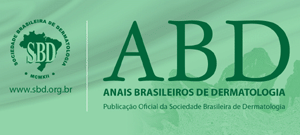Resumo em Português:
Cosmiatria é uma sub-especialidade em grande crescimento. Estudos em ciência básica de alta qualidade têm sido publicados; ao contrário, existem poucos estudos clínicos duplo-cegos, randomizados e controlados, que constituem o maior instrumento para medicina baseada em evidência nessa área. A pesquisa clínica é essencial para a descoberta de novos conhecimentos, melhora das bases científicas, solução de desafios e boa prática clínica. Para ser um pesquisador bem sucedido, os princípios básicos são interesse, disponibilidade, persistência e honestidade. É essencial aprender como escrever um protocolo de pesquisa e conhecer as regras regulatórias nacionais e internacionais. Um protocolo de pesquisa clínica completo deve incluir questão, fundamentos, objetivos, metodologia (desenho, descrição das variáveis, tamanho da amostra, randomização, critérios de inclusão e exclusão, intervenção, parâmetros de eficácia e segurança e análise estatística), termo de consentimento livre e esclarecido, ficha clínica e referências. A aprovação do Comitê de Ética em Pesquisa e a declaração do financiamento são imprescindíveis. A publicação de resultados positivos ou negativos deve ser um comprometimento dos autores.
Resumo em Inglês:
Cosmetic Dermatology is a growing subspecialty. High-quality basic science studies have been published; however, few double-blind, randomized controlled clinical trials, which are the major instrument for evidence-based medicine, have been conducted in this area. Clinical research is essential for the discovery of new knowledge, improvement of scientific basis, resolution of challenges, and good clinical practice. Some basic principles for a successful researcher include interest, availability, persistence, and honesty. It is essential to learn how to write a protocol research and to know the international and national regulatory rules. A complete clinical trial protocol should include question, background, objectives, methodology (design, variable description, sample size, randomization, inclusion and exclusion criteria, intervention, efficacy and safety measures, and statistical analysis), consent form, clinical research form, and references. Institutional ethical review board approval and financial support disclosure are necessary. Publication of positive or negative results should be an authors' commitment.
